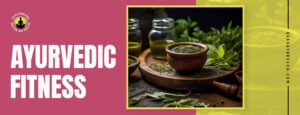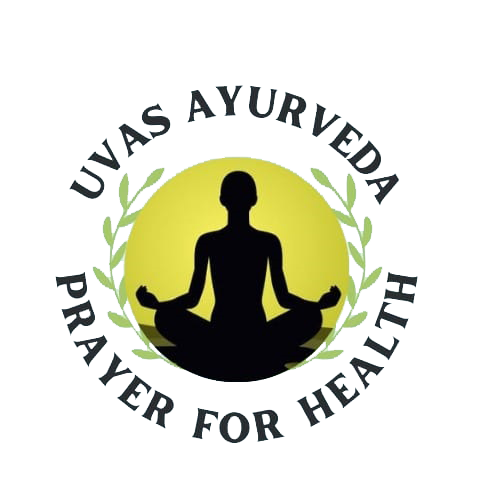In the pursuit of holistic well-being, Ayurveda has emerged as a time-tested system that integrates physical, mental, and spiritual health. Ayurvedic fitness approaches emphasize the importance of personalized regimens tailored to an individual’s unique constitution, or dosha. Among the various Ayurvedic practices, Vyayama stands out as an exercise methodology that harmonizes the body, mind, and spirit. By combining physical movement, breath control, and mindfulness, Vyayama offers a customized path to well-being that promotes balance, vitality, and overall fitness.
In an era marked by technological advancements and innovations, physical activity has significantly declined, leading to a growing concern for individuals of all ages, including children. Maintaining an ideal body weight and overall health necessitates regular exercise. With sedentary lifestyles becoming the norm, it is crucial to emphasize the importance of incorporating physical activity into our daily routines.
Vyayama is a desirable health behavior for maintaining the health of a healthy person and also to prevent the metabolic disorders. Lack of vyayama is the major reason for lifestyle disorders/ non-communicable diseases and also paves way to the infectious diseases by hampering the immune power. In Ayurveda vyayama is included in the Dinacharya, the daily regimen and all Acharyas have mentioned about the importance of Vyayama .
Vyayama includes all the exertional activities, which impart stretching of different body parts. Vyayama, is the best tool for improving firmness, and is reflected as the ultimate for stability. In fact, it is the best way to get rid of obesity.
Ayurvedic View on Vyayama
Ayurveda, the ancient Indian system of medicine, views the human body as an interconnected entity influenced by three doshas: Vata, Pitta, and Kapha. Each dosha represents a unique combination of elements and qualities, and an imbalance among them leads to various health issues. Ayurvedic fitness aims to restore harmony among the doshas by incorporating practices that align with an individual’s constitution.
In the past, exercise was mainly recommended for warriors or people consuming high-fat diets. They needed it to stay strong and balanced. But today, due to the rise of technology, coupled with modern conveniences, has led to a sedentary lifestyle for many individuals. Excessive screen time, desk-bound jobs, and reliance on transportation have limited physical movement, resulting in a host of health consequences.
Features of optimal vyayama
Profuse sweating increased respiration, feeling lightness of body and tightness in cardiac region are signs of optimal vyayama. Extent of exercise is determined by one’s own capacity. One should stop exercise before getting tired. Strong persons, and those habituated to fat rich diet can daily practice vyayama up to half of their capacity in cold seasons like hemanta & shishira (winter) and in vasanta ritu (spring). During rest of the seasons, vyayama can be executed with mild to moderate strength. Vyayama shakti or strength of performing physical exercise is an important patient examination tool in Ayurveda. A healthy individual can withstand exercise or any physical activity. Whereas, lean or emaciated person is deprived of the ability to perform exercise
Contraindications of Vyayama
People with diseases of vata and pitta, young children and aged and people with indigestion problem are restricted to do vyayama.
Vyayama should not be done:
- Soon after having food
- Exhausted by other physical activities
- Feeling thirsty
- Feeling hungry
- Pregnancy
- Exhausted by walking, weight lifting, coitus etc.
Adverse effects of over Exercise:
Excessive thirst, emaciation, severe dyspnoea or difficulty in breathing, bleeding disorders, exhaustion, feeling of debility even without work, cough ,fever and vomiting are the adverse effects of doing excessive vyayama.
It states that those who indulge in too much of exercise daily, who keep themselves awake till late nights regularly , who walk long distance regularly, who indulge in excessive sexual activities, too much of laughing , speaking and much other strenuous activities will perish ,just as a lion perishes after vanquishing an elephant.
Benefits of vyayama
Ayurveda values exercise for its many benefits. It points out that exercising brings lightness to the body, improves ability to work, boosts stamina, strengthens muscles, and improves metabolism, burns excessive fat and it brings body into good shape. They can easily digest even the incompatible food. Vyayama relieves sleepiness. It is included in the langhana, one of the treatment methods done to bring lightness to the body and to eliminate the toxins. So it helps to bring the metabolic toxins from koshta that is the central part of body to the extremities and then expels out through the sweat.
Kleda (interstitial fluid) does not accumulate in tissues by virtue of regular exercise. Obesity can be checked by regular vyayama as it endows well-built musculature to the person. The exercise generated digestive fire can properly digest food items even if they are incompatible, heavy to digest and hence can avoid the formation of the unwanted metabolic toxins which is termed as Ama in ayurveda.
Vyayama exercises can help improve concentration and mental clarity. It can make you feel happier and less anxious by releasing feel-good chemicals in your body. It helps align your body’s energy levels, promoting overall balance and well-being.

Post exercise Care
Oleation therapy is beneficial, for those who are accustomed to regular exercise. Acharyas have mentioned Vyayama without prior oil massage causing vatika gulma (development of abnormal masses), due to vata accumulation in the body. Whole body oil massage following vyayama, increases the exercise endurance. After performing vyayama, one should gently massage the whole body. This helps to relieve the muscle spasm due to the exercise. Powder massage is also advised after exercise which will prevent diseases and offers appealing look.
Physical activities be tailored based on doshas
Each person have different constitution as Vata, Pitta, Kapha or as a combination of two Doshas.
Routine for Vata
Individuals with a dominant Vata nature require additional rest, care, and gentle movements due to their tendency towards dryness. They generally have more activities apart from regular exercises, which can cause internal friction. This tendency may lead to vulnerabilities such as weak joints, anxiety, or restlessness.
Because the Vata force is influenced by air and space, these individuals should adopt a slow and focused exercise regimen. Practices like restorative yoga, allowing ample time to relax in postures, align well with their needs.
Application of oil before exercises and mild massage after the exercise will help to control the aggravated vata and can hence restrict the occurrence of vata disorders like osteoporosis , arthritis or any degenerative changes.
Exercise for Pitta
Pitta individuals naturally possess strength and endurance, making them drawn to dynamic exercises such as weightlifting, rock climbing, and endurance sports, which cater to their competitive nature. However, Pitta types need to learn how to cool down.
Engaging in activities that offer a cooling effect on the body such as river rafting, swimming, water-skiing, surfing, or windsurfing, are more suitable for Pitta individuals. For pitta-predominant types, the ideal exercise program is typically challenging but moderately paced, with an emphasis on relaxed effort throughout the activity. The Yoga Asanas with backbends, especially ones on the belly, are great for pitta—bhujangasana (cobra), dhanurasana (bow), matsyasana (fish)—as well as side bends and twists.
Physical Activity for Kapha
Kapha individuals tend to enjoy leisurely activities like gardening and baking. Still, they must stay physically active and socially connected to prevent feelings of sluggishness, weight gain, and low mood. Engaging in vigorous aerobic exercises and maintaining a consistent workout routine helps them avoid slipping into their default state of lethargy. Kapha predominant persons require more activity than other individuals as the natural instinct of kapha predominant persons are to be inactive.
The Essence of Vyayama
Vyayama, derived from the Sanskrit word “vyaam,” meaning exercise, is a holistic approach to fitness within Ayurveda. It blends physical movements, breath control, and mindfulness techniques to create a comprehensive exercise regimen. Unlike conventional fitness routines, Vyayama recognizes that each individual has different physical capacities and energy levels, and tailors the practice accordingly.
Ayurvedic fitness, particularly through the practice of Vyayama, offers a personalized and holistic approach to well-being. By aligning physical movements, breath control, and mindfulness with an individual’s dosha, Vyayama helps restore balance, vitality, and overall fitness. Its benefits extend beyond physical fitness to encompass mental, emotional, and spiritual well-being. Embracing Vyayama as part of a daily routine can lead to a profound transformation, fostering a harmonious integration of body, mind, and spirit. Embrace the ancient wisdom of Ayurvedic fitness and embark on a journey towards optimal health and well-being.
Uvas Ayurveda is a global center of learning for Ayurveda enthusiasts, offering a diverse range of online, offline, and residential Ayurvedic courses and treatments. It serves as a dynamic fusion of a treatment center and a thriving hub for Ayurvedic education.
When we say the best school of ayurveda it does not mean about the infrastructure or the school buildings, but its about the quality of the courses and the knowledge that can be gained by the students. This also includes the convenience of the students. And this can be done by
- Ayurvedic Doctors
- Nutritionist
- Dietitians
- Yoga instructors
- Ayurvedic enthusiastic
- Therapeutic Yoga
- Also for beginners who wanted to know about ayurveda
Uvas Ayurveda offers online/offline/ residential courses on various subjects like:
- Woman Care (Stree)
- Pregnancy Care(Garbha Matha Sanskar)
- Nutrition, Diseases and Diet (Pathyapathya)
- Weight Management (Obesity)
- Ayurvedic Cosmetology (Soundarya)
- Ayurcharya for beginners ( Basics on Ayurveda)
These Ayurveda courses offer more than just knowledge; they provide practical tools to improve your daily living and align with nature, promoting a healthy lifestyle. By delving into the teachings of Ayurveda, you gain insights that go beyond theory and empower you to make positive changes in your life. These courses equip you with the wisdom and practices to live in harmony with nature, fostering a healthier and more balanced existence.


Leave A Comment